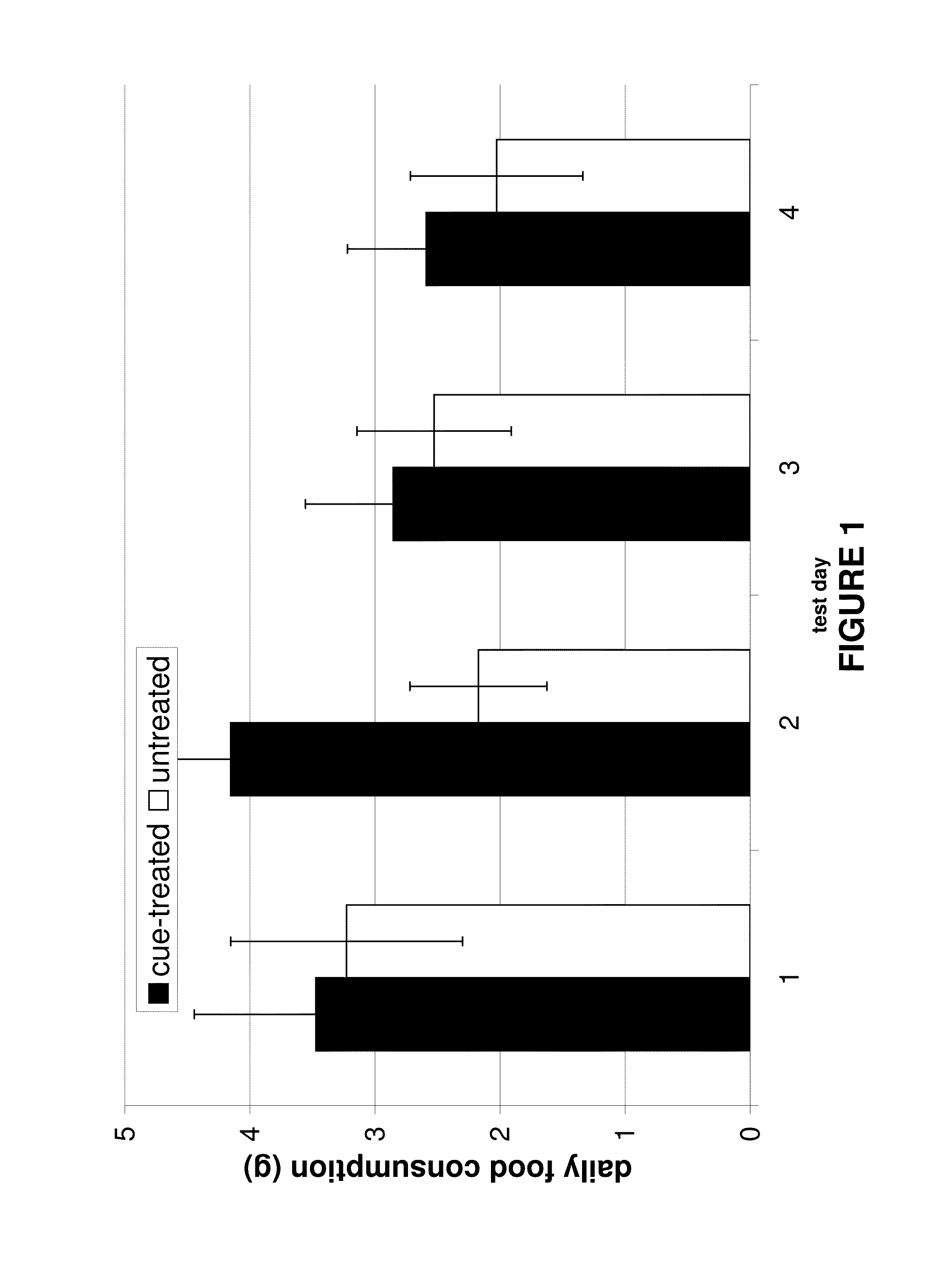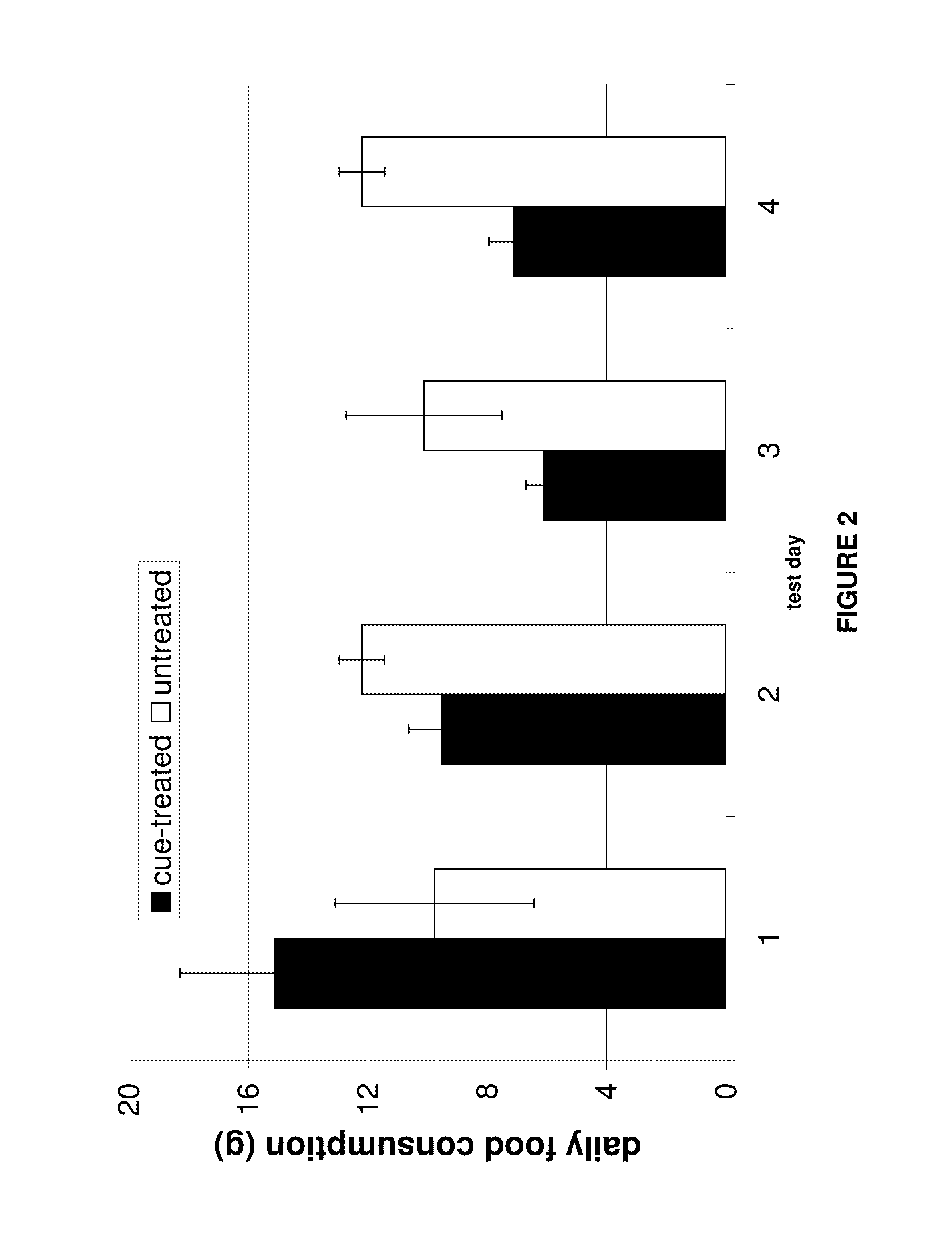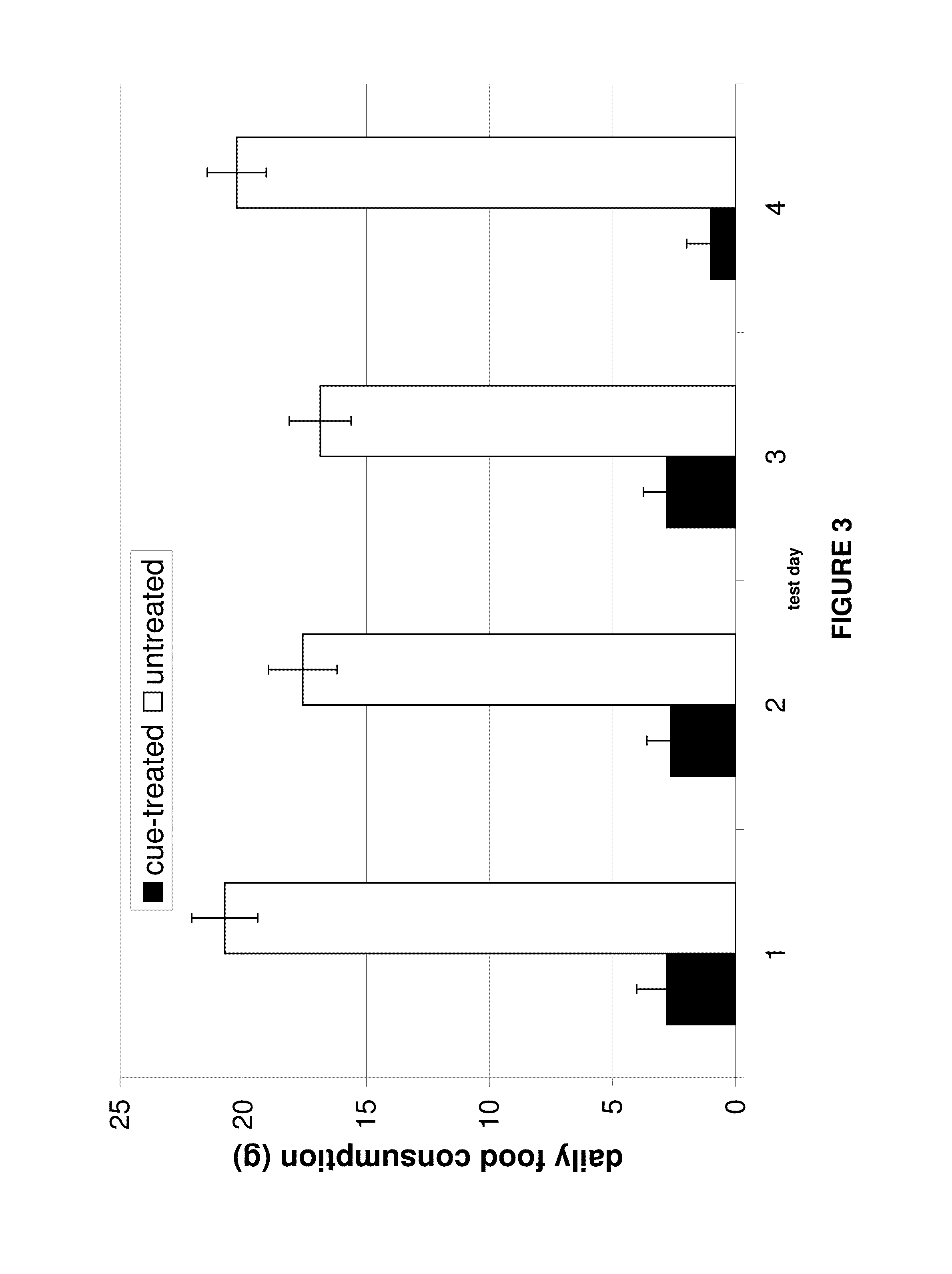Ultraviolet strategy for avian repellency
a technology of ultraviolet and repellent agents, applied in the field of repelling wild birds, can solve the problems of increasing the cost of repeated applications, and so as to achieve the effect of significantly reducing the amount of repellent agents
- Summary
- Abstract
- Description
- Claims
- Application Information
AI Technical Summary
Benefits of technology
Problems solved by technology
Method used
Image
Examples
example 1
[0033]In the first of three experiments, 11 red-winged blackbirds were offered one bowl of sunflower seeds treated with an ultraviolet-absorbent cue (TiO2, AEROXIDE P25, Evonik Goldschmidt Corp., Hopewell, Va.) and one bowl of untreated sunflower seeds within individual cages. Daily food consumption was measured. This baseline (i.e., control) experiment evaluated preferences independent of repellent conditioning for individually-caged birds. Consumption of treated and untreated food did not differ during the 4-day test (P=0.234; FIG. 1).
[0034]In the second of three experiments, 5 red-winged blackbirds within each of 5 cages were offered one bowl of sunflower seeds treated with an ultraviolet-absorbent cue (AEROXIDE P25, Evonik Goldschmidt Corp., Hopewell, Va.) and one bowl of untreated sunflower seeds. Daily food consumption was again measured. This baseline (i.e., control) experiment evaluated preferences independent of repellent conditioning for group-caged birds. Consumption of t...
example 2
[0037]In this experiment, 35 experimentally-naïve red-winged blackbirds within individual cages were randomly assigned to 1 of 3 conditioning groups. All birds in the control group (n=13) were offered one bowl of sunflower seeds treated with an ultraviolet-absorbent cue (AEROXIDE P25, Evonik Goldschmidt Corp., Hopewell, Va.); all birds in the anthraquinone conditioning group (n=11) were offered one bowl of sunflower seeds treated with an anthraquinone-based, ultraviolet-absorbent bird repellent (AVIPEL, ARKION Life Sciences LLC, New Castle, Del.); and all birds in the methyl anthranilate conditioning group (n=11) were offered one bowl of sunflower seeds treated with an methyl anthranilate-based, ultraviolet-absorbent bird repellent (FOG FORCE, Natural Forces LLC, Davidson, N.C.) during a single day of repellent conditioning. All birds were also gavaged with 2 g of sunflower seeds treated with the AEROXIDE P25 cue (control group), the anthraquinone-based repellent (anthraquinone cond...
example 3
[0039]A demonstrated in Example 1 and Werner et al. (2112. ibid, the contents of which are incorporated by reference herein) the ultraviolet feeding cue is not itself repellent to tested birds. This example demonstrates the synergistic repellency of the ultraviolet cue added to repellent food treatments. In this experiment, 110 experimentally-naïve red-winged blackbirds within individual cages were offered sunflower seeds treated with (a) an anthraquinone-based, ultraviolet-absorbent bird repellent (AVIPEL, ARKION Life Sciences LLC, New Castle, Del.) and an ultraviolet-absorbent cue (AEROXIDE P25, Acros Organics, Fair Lawn, N.J.; “repellent+cue”) or (b) only the repellent (AVIPEL; “repellent”). All birds were offered one bowl of untreated sunflower, daily throughout a three-day pre-test. On the subsequent day, all birds in the “repellent+cue” group (N=55) received one bowl of sunflower treated with one of six concentrations of the repellent (0.02-0.5% repellent, by weight) and 0.2%,...
PUM
 Login to view more
Login to view more Abstract
Description
Claims
Application Information
 Login to view more
Login to view more - R&D Engineer
- R&D Manager
- IP Professional
- Industry Leading Data Capabilities
- Powerful AI technology
- Patent DNA Extraction
Browse by: Latest US Patents, China's latest patents, Technical Efficacy Thesaurus, Application Domain, Technology Topic.
© 2024 PatSnap. All rights reserved.Legal|Privacy policy|Modern Slavery Act Transparency Statement|Sitemap



